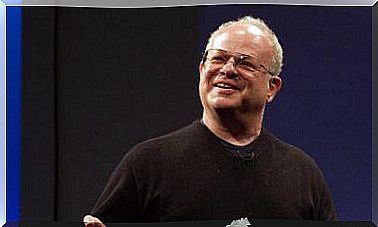8 Principles Of Pragmatic Optimism

To go through all that human beings have gone through and get to where they have come, it has been essential to have enjoyed an excess of optimism. But not everyone has the same amount of enthusiasm and courage. Writer and popularizer Mark Stevenson came up with the idea of identifying the common traits of optimistic people par excellence. And he established the 8 principles of pragmatic optimism.
Scientific and technological changes are transforming the society in which we live. For this reason, Stevenson believes that it is necessary to educate and live in a slightly different way than it is currently done. He affirms that an effort should be made to maintain a thinking based on pragmatic optimism.
To do this, he asks how certain people manage to do good things in a world in constant change. And what all of them have in common that makes them more likely to fight for the future and transform the world.
Dream and imagine
Optimism is the tendency to hope that the future will bring favorable results. Therefore, it requires the will to find solutions, advantages and possibilities; always focusing on the positive.
Stevenson reproaches the prevailing conformism in today’s society and encourages us to imagine, dream and elucidate the future as we want it. Letting ourselves be guided by what we long for is the only way to put pragmatic optimism into practice.

Create for the good of all
Establishing these principles, Stevenson realized that people who provide significant breakthroughs or progress globally are committed to and linked to projects that go beyond themselves.
Egoism has no place in this current of thought because its motivation is an ulterior end far removed from individualisms and narcissisms: to create for the good of all, not of a few or of themselves.
Bet on what works
Beliefs are subjective. The objective scientific facts. Stevenson believes that pragmatic optimism must focus on the latter, in order to guarantee a more scientific and evidence-based way of thinking. That is, it recommends focusing on what is proven to work.
To do this, he gives the example of the work of an engineer compared to that of a politician. While the former builds structures based on objective reality, the politician allows himself to be guided by his ideology, refusing on many occasions to see things as they are. Steveson encourages you to think like engineers.
Sharing to exercise power
Sharing ideas amplifies them, makes them grow. If, on the contrary, we protect those ideas, what we do is deprive the world of them and the power that they entail. A brilliant idea if not shared remains isolated, suspended, parked and stopped. And finally, it dies.
Now we are all connected and changes are spreading more quickly. This writer ensures that the more connected states, the faster ideas circulate. But, equally, he believes that if power is widespread on the Internet, responsibility should also be. We should not delegate to others in a systematic way.

To err is to progress
If we make a mistake, nothing happens. We get up again. And again. But something does happen if we do not dare to try: we are victims of the fear of failure.
Thus, Mark Stevenson encourages us to err because he believes that being wrong is a way to move towards success. In fact, he regards it as the best strategy for progress. No one has discovered anything without previously erring.
People who believe that error is the greatest catastrophe that can happen to them are stuck and stuck. In doing so, they commit serious irresponsibility and find themselves unknowingly on the wrong path.
Do instead of try
The intention motivates action, but we are not made up of attempts, if not actions. Therefore, the best way to be true to who we are is by acting, taking what we believe and think into practice. We are what we do and feel and not what we intend to do or simply imagine.
Discard laziness
Stevenson believes that cynicism culturally rules the world. It reflects a lack of ambition and hope that things can be better. Pragmatic optimism advocates discarding laziness, excuses, and personal stagnation. Only by overcoming this mental barrier will we be able to live with hope.

Practice patience
Every project is a long-term plan. A kind of long-distance race in which we take small steps until we reach the proposed goals. Some days we will advance more, others less, but the reward will come sooner or later. Waiting, effort, patience, and persistence make the provided social good worthwhile.
These 8 principles are a perfect guide to train us in pragmatic optimism. It will allow us to achieve a more productive and positive personal state. In addition, if we begin to introduce it into daily life, it will give us more confidence to transform everything we set out to do. Change is always possible.









